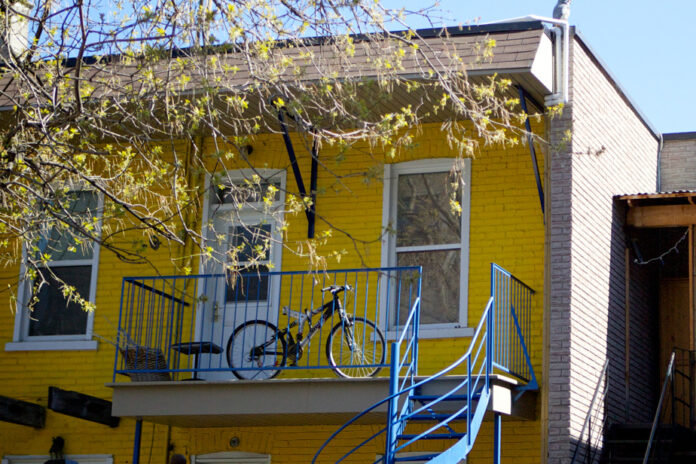Unlike other major cities in the country, Montreal and Quebec have a significant stock of affordable private housing for low-income households, according to a new indicator prepared by the Canada Mortgage and Housing Corporation (CMHC).
In the inventory of private dwellings located in buildings offering three or more rental units in the Montreal area, 23% of dwellings are offered at a rent of less than $750 per month, which corresponds to less than 30% of pre-tax income for the poorest households.
“The first indicator measures the share of housing that is affordable for renters in the lowest [20%] income quintile. For a home to be considered affordable, its rent must be less than 30% of pre-tax household income,” Deputy Chief Economist Kevin Hughes wrote in a June 22 blog post.
In Quebec City, a quarter of private dwellings fall into this category. In contrast, in Toronto and Ottawa, it’s close to 0%; in Vancouver, 1%; in Gatineau, 8%.
“What this first measurement tells us is worrying to say the least,” Hughes continues in his post. As shown in the figure [above], the least affluent households have access to a very small share of the rental stock. In major centres, with the exception of Quebec and Montreal, the share of the market that is affordable for low-income households is less than 5%. It is 1% in Vancouver and almost zero in Ontario cities. »
In an interview with La Presse, Mr. Hughes defends himself from wanting to minimize the housing affordability crisis in Quebec. “We don’t pass judgment on that,” he said. Only the comparison between the major cities in the country is reported. At the relative level, the percentage is higher. On the other hand, the situation in Montreal and Quebec, taken as a whole, has its challenges and we are not ignoring that at all. »
The proportion of 23% in the census metropolitan area of Montreal corresponds to 143,400 dwellings whose monthly rent does not exceed $749.
Working with data from its annual rental housing survey, CMHC excludes HLMs, non-profit housing and subsidized households from its indicator.
The rental stock in Montreal and Quebec differs from that of the rest of the country, explains Mr. Hughes, for three reasons: it is deeper, it is older and it is largely made up of low-density housing made of wood and in brick which are generally of lower quality, and therefore less expensive, compared to housing in steel and concrete towers which are generally found elsewhere in the country.
Its co-spokesperson, Martin Blanchard, cites Centraide, which estimates that in 2022, 360,000 households (about 19% of households) in Greater Montreal would have a negative residual income if they lived in market housing and supported their basic needs (food, clothing, transport and others).
He also points out that the proportion of renters living in subsidized housing is higher in Toronto (14.6%) than in Montreal (8.2%), according to data published in 2019 by the Montreal Metropolitan Community ( CMM).
According to 2021 figures released by the CMM, there are nearly 83,000 social and community housing units, which includes households benefiting from the Rent Supplement Program on the private market.
Subsidized housing as defined by Statistics Canada includes “rent-geared-to-income housing, social housing, non-profit housing, low-income housing, housing benefiting from government housing assistance and housing whose occupants receive rent supplements or housing allowances”.















